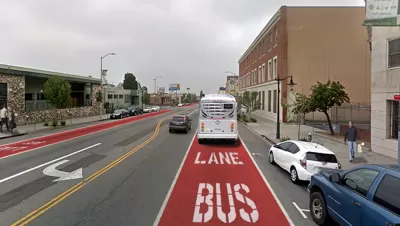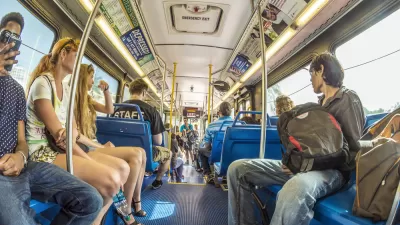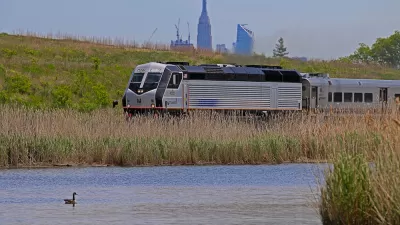More buses and trains alone won't bring back riders; other incentives are needed to boost ridership and encourage new users.

"[N]ew federal spending on transit could mean faster, cleaner, more reliable and more numerous buses and trains," but this may not be enough to bring back riders. Thomas Day argues that state and local governments must also address other issues: "ensuring that lower-income residents can afford to live in central cities, removing parking from many urban streets, and reducing or eliminating transit fares."
"To make the federal spending on transit work, [policymakers] will need to make decisions around land use and affordable housing that will be far less popular" than those around transit, Day writes. "In 2020, suburbs of the 55 U.S. cities with metropolitan populations above 1 million grew at five times the pace of urban centers, according to data analyzed by the Brookings Institution’s William Frey," putting more dependent transit riders farther away from central cities. "If there indeed is a direct relationship between lower-income residents moving away from urban centers and the decline in transit ridership, local officials will need to work harder to ensure sufficient affordable housing near public transit."
Some relatively accessible tools for improving service and getting riders back on transit do exist: "Designating lanes to allow bus rapid transit service to race by other traffic, for example, has the benefits of lower capital costs, little if any public opposition and the ability to quickly respond to demographic movements." Day also suggests eliminating fares, which, while it may not attract more commuters, benefits low-income dependent riders. If "urban leaders are willing to move forward with policies that have a real chance of luring riders back to transit, the new infrastructure spending package could transform American cities and dramatically reduce carbon emissions. "
FULL STORY: Will Billions from Washington Bring Transit Riders Back? Not Necessarily.

Planetizen Federal Action Tracker
A weekly monitor of how Trump’s orders and actions are impacting planners and planning in America.

Maui's Vacation Rental Debate Turns Ugly
Verbal attacks, misinformation campaigns and fistfights plague a high-stakes debate to convert thousands of vacation rentals into long-term housing.

Restaurant Patios Were a Pandemic Win — Why Were They so Hard to Keep?
Social distancing requirements and changes in travel patterns prompted cities to pilot new uses for street and sidewalk space. Then it got complicated.

In California Battle of Housing vs. Environment, Housing Just Won
A new state law significantly limits the power of CEQA, an environmental review law that served as a powerful tool for blocking new development.

Boulder Eliminates Parking Minimums Citywide
Officials estimate the cost of building a single underground parking space at up to $100,000.

Orange County, Florida Adopts Largest US “Sprawl Repair” Code
The ‘Orange Code’ seeks to rectify decades of sprawl-inducing, car-oriented development.
Urban Design for Planners 1: Software Tools
This six-course series explores essential urban design concepts using open source software and equips planners with the tools they need to participate fully in the urban design process.
Planning for Universal Design
Learn the tools for implementing Universal Design in planning regulations.
Heyer Gruel & Associates PA
JM Goldson LLC
Custer County Colorado
City of Camden Redevelopment Agency
City of Astoria
Transportation Research & Education Center (TREC) at Portland State University
Jefferson Parish Government
Camden Redevelopment Agency
City of Claremont





























